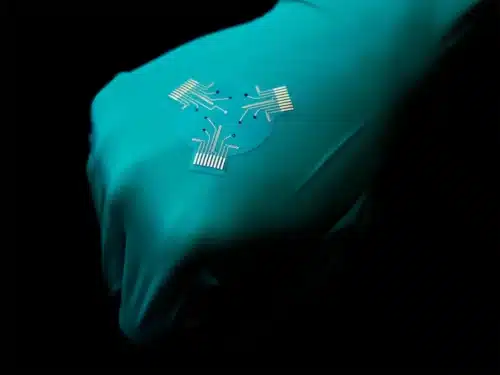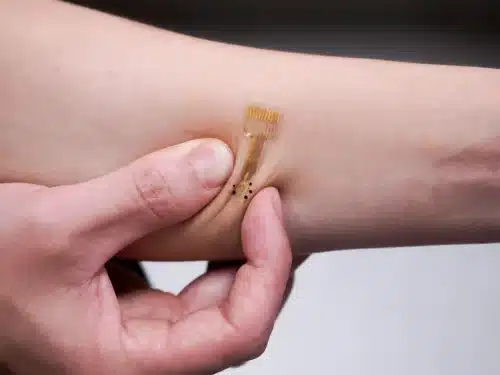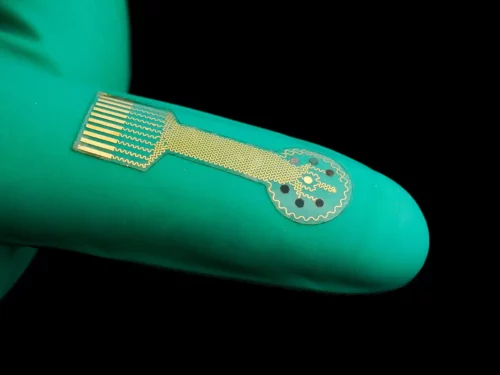Researchers have developed smart bandages that can effectively change the way the treatment for chronic wounds in a cheaper way.

The body’s natural healing process can effectively handle cuts, scrapes, burns, and other types of wounds. However, for individuals with diabetes, this may not always be the case. The condition can impair the healing process and result in persistent wounds that are susceptible to infection and may worsen over time.
Researchers at Caltech have developed a new kind of smart bandage that treats wounds easily, more effectively, and is less expensive. These smart bandages were developed in the lab of Wei Gao, assistant professor of medical engineering, Heritage Medical Research Institute Investigator, and Ronald and JoAnne Willens Scholar.
Unlike a typical bandage, which might only consist of layers of absorbent material, the smart bandages are made from a flexible and stretchy polymer containing embedded electronics and medication. The electronics allow the sensor to monitor for molecules like uric acid or lactate and conditions like pH level or temperature in the wound that may be indicative of inflammation or bacterial infection.

The bandage can respond in one of three ways: First, it can transmit the gathered data from the wound wirelessly to a nearby computer, tablet, or smartphone for review by the patient or a medical professional. Second, it can deliver an antibiotic or other medication stored within the bandage directly to the wound site to treat the inflammation and infection. Third, it can apply a low-level electrical field to the wound to stimulate tissue growth resulting in faster healing.
The smart bandages, when tested on lab animals, showed the ability to provide real-time updates about wound conditions and the animals’ metabolic states to researchers, as well as offer speed healing of chronic infected wounds similar to those found in humans. Researchers are currently working on improving the bandage technology and testing it on human patients, whose therapeutic needs may be different than those of lab animals.

Reference: “A stretchable wireless wearable bioelectronic system for multiplexed monitoring and combination treatment of infected chronic wounds”, 24 March 2023, Science Advances.
DOI: 10.1126/sciadv.adf7388






